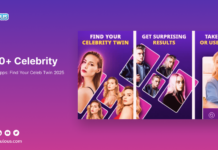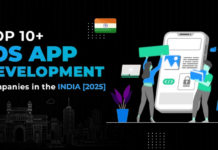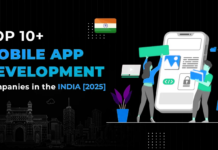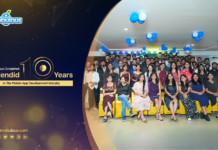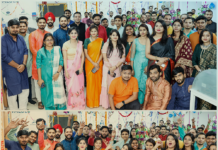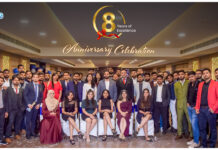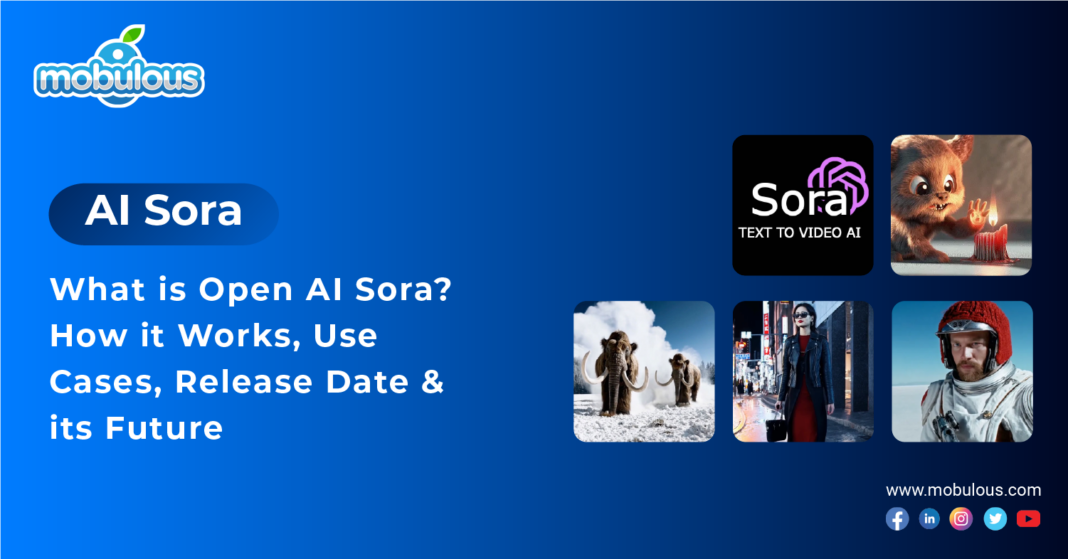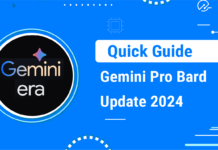AI Sora is a text-to-video model that creates AI video from text and is developed by America-based Artificial Intelligence research organization, i.e., OpenAI. It is able to generate videos as per the illustrative and text prompts, expand existing text videos forward or backward in time, and generate videos from motionless images.
Sora from Open AI is here and is ready to break the boundaries. OpenAI has recently announced its latest mindblowing technology, i.e., Sora which is a text-to-video generative AI model.
Sora brings your vision to life, rendering intricate and complex details, dynamic and vibrant camera movements, and even character interactions. Let’s dive into the realm of Sora AI and understand how it works, its use cases, the OpenAI release date, and what it holds for the future.
A Vast History of AI Sora: Text-to-Video Model
There are numerous text-to-vide generating models have been developed before Sora’s coming into existence. These models include Meta’s Make-A-Video, Google’s Lumiere, Runway’s Gen-2, etc.
OpenAI is the company that has developed Sora. It also released DALL·E 3, the third of its DALL-E text-to-image models in September 2023. They developed Sora and named it after the Japanese word, i.e., “Sky” in order to signify its “unlimited potential for being creative.”
On 15 February 2024, Open AI previewed Sora for the first time simply by releasing numerous clips of high-definition videos that it created. It included an animation of a “short fluffy monster”, “SUV driving down a mountain road”, “animals riding bicycles in the sea”, etc., and noted that it can generate text videos up to one minute long.
After this, the company shared a technical report that emphasized the methods used to train the model. OpenAI has also stated that it plans to make Sora available to the public soon, however, the date has yet to be specified.
Apart from this, the company has provided limited access to a small “red team” and experts in misinformation and bias in order to perform adversarial testing on the model. Sora has also been shared by the company with a small group of creative professionals, including video makers and artists in order to seek feedback on its usefulness in the creative fields.
Also Read:- A Quick Guide on Gemini Pro Bard Update 2024.
AI Sora: Meaning and Examples
A chatbot that creates video from text is known as Sora AI. OpenAI has developed this AI and is considered a text-to-video generative AI model. This simply means that once you write a text prompt and give an informative command to Sora, it will create a video in no time that will completely match your description of the prompt.
Let’s comprehend this with some important examples from the OpenAI site:
- Two golden retrievers podcasting on top of a mountain.
- A bicycle race on the ocean with different animals as athletes riding the bicycles with a drone camera view.
- The animated scene features a close-up of a short fluffy monster kneeling beside a melting red candle.
- A gorgeously rendered papercraft world of a coral reef, rife with colorful fish and sea creatures.
- A cartoon kangaroo disco dances.
AI Sora: How Does Open AI Sora Work?
Similar to text-to-image generative AI models, including DALL·E 3, StableDiffusion, and Midjourney, Sora is deemed a diffusion model.
This simply means that it starts with each frame of the video that consists of static noise and utilizes machine learning in order to transform the images into something that resembles the description in the prompt.
However, Open AI Sora text videos can be up to 60 seconds, i.e. one minute long.
1. Unraveling Temporal Consistency
One area of innovation in Open AI Sora is that it considers and entertains numerous video frames all at once. This is done in order to unravel the problem of keeping objects intact and consistent when they move in and out of the view.
2. Integrating Diffusion and Transformer Models
Sora integrates the use of a diffusion model with a transformer architecture as it is operated and used by ChatGPT. When integrating these two types of models, it has been noted that diffusion models are great at generating low-level texture but not so good at global composition. On the other hand, transformers have the opposite problem.
Now, you will understand that you need a GPT-like transformer in order to demonstrate the high-level layout of the video frames and a diffusion model in order to complete the details.
Under the diffusion model, images are split into smaller rectangular patches, and for video, these patches are 3D as they endure and continue through time. However, the transformer part of the model manages the patches, and the diffusion part of the model develops the content for each patch.
Another oddity of this mixed architecture is that to make video generation computationally possible and viable, the procedure of forming patches uses a dimensionality decline so that computation does not ought to transpire on every single pixel for every single frame.
3. Improving the Fidelity of Video and Recaptioning
In order to capture the essence of the user’s prompt faithfully, Sora utilizes a recaptioning strategy which is also available in DALL·E 3.
This simply indicates that before creating any video, ChatGPT is used in order to rewrite the user prompt carefully so that the user can add a lot more detail precisely. Basically, it is a type of automated prompt engineering.
AI Sora’s Capabilities and Limitations
The technology behind Sora AI is an adaption of the technology behind DALL-E 3. As per Open AI, Sora is considered a diffusion transformer which is basically a latent diffusion model with one transformer as the denoiser.
Under this, recaptioning is utilized in order to boost training data, simply by using a video-to-text model and producing detailed captions on AI generated videos. Open AI has taught and acquainted the model using publicly available videos and copyrighted videos.
After its release, Open AI admitted some shortcomings of Sora that included its struggle to simulate complicated physics, to differentiate left from right, and to understand casualty.
OpenAI Sora has also emphasized that in adherence to the existing safety features of the company, Sora will restrict text prompts for violent, celebrity imagery, sexual, or hateful content.
Tim Books and Bill Peebles are some of the most popular researchers on Sora AI. Tim Brooks has stated that the model figured out how to create three-dimensional graphics from its dataset alone. Bill Peebles has stated that the model creates different video angles without being prompted.
As per OpenAI, Sora-generated videos are labeled with C2PA metadata in order to demonstrate that they all are AI-generated.
AI Sora’s Use Cases
Sora AI is basically used to create videos from the start or expand existing videos in order to make them longer. This particular AI can also fill in the missing or absent frames from the videos.
Similarly, text-to-image generative AI tools have made it dramatically more manageable and hassle-free to generate images without the need for technical image editing expertise, Sora vows to make it easy and seamless to generate videos without the requirement of image editing experience.
Let’s focus on some of the most important AI Sora’s use cases in extra detail.
1. Social Media
Sora AI can be used predominantly in order to generate short-form videos for social media platforms such as Instagram reels, TikTok, and YouTube shorts.
You can understand that content that is too complex or impossible to record or film is especially suitable with Sora.
2. Advertising and Marketing
Generating adverts, product demos, and promotional AI generated videos are conventionally expensive. However, with the launch of AI Sora, i.e., text-to-video model, Sora promises to make this process much cheaper and more reasonable.
3. Prototyping and Concept Visualization
Even if AI video is not used in a final product, it can be advantageous in order to exemplify ideas quickly and effectively. Filmmakers use AI for mockups of scenes and sets before they shoot them, and creators create AI generated videos of products before they start producing them.
For Any Query:- Seek help from Artificial Intelligence and Machine Learning Services!
Goals and Intended Uses of Open AI Sora
Sora AI is intended to be a companion of artificial intelligence that humans can have engaging and appealing conversations with over a longer period of time. Open AI didn’t focus on factual question answers but it designed Sora in order to participate in casual social dialogues about ordinary topics just like one might chat about with a friend.
The key goal is for people to enjoy and appreciate these free-flowing dialogues and want to continue them across multiple conversations with Sora. In particular, OpenAI emphasizes a few main uses they have in mind for Sora:
- People genuinely chat with AI bots about their day, current events, their interests, etc. However, Sora aims higher for humans to relish the conversation itself, not just view it as replying to requests. If Sora can become an engaging conversationalist, people may want to interact with it daily like a personal companion.
- As a way to collect valuable feedback from people interacting with Sora that can then be integrated by engineers and trainers systematically in order to enhance Sora’s conversational abilities over time. This can permit rapid advances in the coherence, relevance, and depth of discussions.
While still early days, Sora represents OpenAI’s vision for how conversational AI assistants could become helpful partners to humans if the technology continues progressing down promising paths. Sora itself may just be a prototype, but this research will inform AI conversations with emotional intelligence and social competency.
How to Access Open AI Sora?
Sora is an AI model that creates realistic and imaginative scenes simply after getting the commands of the users. These commands or instructions are given through text prompts just as in ChatGPT. Sora can generate videos of up to 60 seconds while maintaining the quality of the video.
However, Sora is becoming available to red teamers in order to assess crucial areas for harm or risks. OpenAI is also giving access to several graphic or visual artists, filmmakers, and designers in order to acquire feedback on how to advance and progress the model to be one of the most helpful and valuable for creative and innovative professionals.
These experts will try to generate content with some of the risks identified in the previous section so Open AI can mitigate and control the situation before releasing Sora to the public. Well, Open AI has not launched a date for its release for the public.
AI Sora’s Alternatives
OpenAI’s Sora has captured various imaginations with its ability to craft realistic videos from text descriptions. As you know Sora has not been made available for public users and its access to limited to a few authorities only, many creators are searching for alternative tools to fuel their artistic visions.
If you are one of those who are searching for alternatives to AI Sora, then worry not as we have come up with the best 5 alternatives of Sora AI. Let’s begin!
1. Veed.io
Veed.io hordes a double point with its AI-powered text-to-video capability and an OpenAI video generator. Here, you don’t need to do anything but input your prompt and tada, it’s done.
With Veed.io, you have a compelling video and script editor at your fingertips. This particular alternative of Sora is set to bring your thoughts, imagination, and ideas to reality.
2. Runway
Runway authorizes and certifies you to generate videos in any style possible. Make sure to dream it up, and describe it, and this particular AI will bring your vision to life.
You can fine-tune your creations with cutting-edge settings, frame interpolations for seamless evolutions, and crystal-clear explanations.
3. Pika
Pika expresses the power of free AI video generation. With this, you can transform your text or image prompts into captivating and exquisite short videos.
You can explore its features, unlock the hidden potential, and delve into user tips of this powerful and robust tool.
4. Synthesia
With the AI-powered avatars and voiceovers of Synthesia, you can craft professional-looking videos.
You are able to select from over 120 languages and experience the alleviation of building videos such as creating a slide deck.
5. Phenaki
Phenaki stands out in developing elongated videos from text captions. With this, you can craft nuanced narratives via prompts that change over time and create content that spans numerous minutes.
Who Gets to Use Open AI Sora?
Well, access to Sora AI is presently on a selective basis. Its access is with red teamers and other selected content creators and film makers for testing the AI in the best possible way.
- Red Teamers: These cybersecurity experts are at the forefront, carefully examining AI to find any potential fault, weak points, dangers, or opportunities for abuse. Their efforts to strengthen and protect the technology for wider application are vital to OpenAI.
- Selected Content Creators: A carefully chosen group of designers, filmmakers, and visual artists are operating and utilizing Sora and delivering priceless insights and perspicuity into how it might enhance creative processes. For OpenAI to improve Sora and make it a more flexible tool for creative projects, this feedback loop is fundamental.
For Any Query: Seek help from Mobile App Development Company
AI Sora’s Future Possibilities
In the upcoming future or say in the next couple of years, Open AI is going to operate Sora AI as a platform for researching in order to explore and analyze essential questions that are related to safety, technical abilities, and ethics. Even if Sora remains to be a prototype, the insights gained can significantly contribute to the advancement of the field.
Within the next five years, if challenges, including truthfulness and accuracy, can be addressed, AI Sora may develop more advanced capabilities for natural dialogue on numerous topics, becoming an appealing virtual companion for those users who are seeking meaningful conversions through AI or Artificial Intelligence.
In the elongated timeframe, i.e., 5 to 10 years, the aspiration is that Sora or other similar alternative AI of Sora could attain levels that make digital assistants mainstream, becoming valuable and beneficial additions to human relationships in areas, including education, mental health, and problem-solving.
Nevertheless, there are also unexpected and surprising prospects that conversational AI progress could accelerate beyond the anticipations of users, leading to the emergence of new capabilities within the next decade. These progressions can enable systems such as Sora in order to engage in personalized, creative, and fulfilling discussions with humans.
As we know the future of Sora remains uncertain, however, the research conducted is spreading the groundwork for transformative and possible modifications in the way humans interact with this artificial intelligence in the years to come.
The Bottom Line
Last but not least, Open AI Sora is a text-to-video model that promises a leap forward in the quality of generative video. Hence, its upcoming release is going to make significant uproar in today’s digital era.
While Sora denotes an unprecedented and phenomenal leap in AI-powered video generation, its existing limited and restricted access leaves creators yearning for broader exploration. But worry not folks, as Sora AI will soon land on the Internet for the entire public.
Frequently Asked Questions
Q. What is Sora AI?
Ans. America-based Artificial Intelligence research organization, i.e., Open AI has developed AI Sora which is a text-to-video model. It can generate videos as per the descriptive text prompts, expand the videos forward or backward in time, and generate videos from motionless images.
Q. How does Sora AI work?
Ans. E 3, Midjourney, and StableDiffusion, AI Sora is a diffusion model. It starts with each frame of the video consisting of static noise and uses machine learning in order to transform the images into something that resembles the description in the text prompt. However, Sora videos can be up to 1 minute long.
Q. Is Sora AI available to the public?
Ans. No, Sora is not available to the public as its testing phase isn’t over yet. It is only available to red teamers, experts and a few artists and filmmakers.
Q. Who can use Sora currently?
Ans. AI Sora is currently used by red teamers and selected content creators in order to test it and find any potential faults, weak points, dangers, or opportunities for abuse so that OpenAI can fix it predominantly before launching it for the end users and the entire public.
Q. What are the potential use cases of Sora?
Ans. Potential use cases of Sora are social media, advertising and marketing, prototyping and concept visualization, and many others.
Q. Are there any alternatives to Sora?
Ans. Yes, there are several alternatives to Sora AI such as Veed.io, Runway, Pika, Synthesia, Phenaki, and several others.


